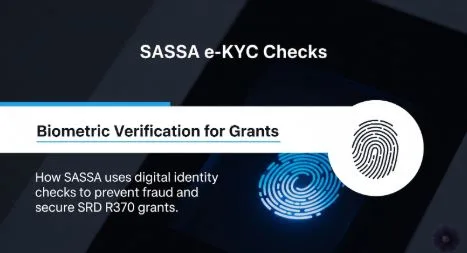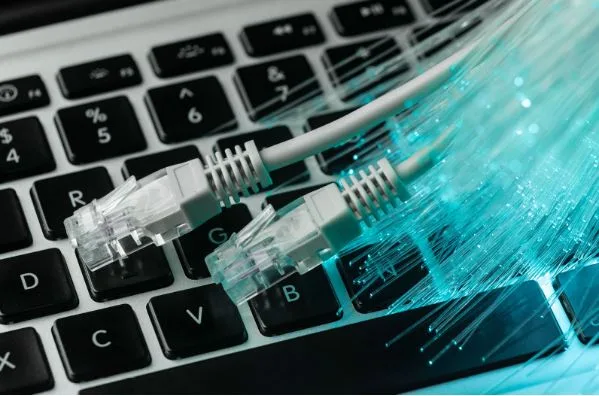SASSA’s Implementation of e-KYC to Reduce Fraud in SRD R370 Grant
For poor South Africans, the SRD R370 grant is no just extra money—it’s survival. Rent, electricity, bread, school shoes… all squeezed out of that one payment. But recently, many recipients have discovered a new hurdle: SASSA e-KYC biometric verification.
Now, I won’t sugarcoat it. This system has saved money, cut down on scams, and kept fraudsters at bay. But it has also added stress, especially for those who barely have airtime to open an SMS link. So let’s unpack why SASSA went biometric, how it works in practice, and whether the benefits outweigh the headaches.
Why SASSA Chose Biometric Verification
Here’s the thing: for years, fraud was chewing away at social grants. Duplicate applications, stolen ID numbers, and people applying on behalf of the deceased—it all chipped away at trust. To stop this, SASSA turned to biometric identity verification.
Think of it like upgrading your front door from a loose latch to a fingerprint lock. Biometric checks give SASSA something far harder to fake: your face, your fingerprint, your digital identity. It’s not perfect, but it’s tougher for scammers to slip through the cracks.
SRD R370 Grant and Security Measures
SRD R370 grant—short for Social Relief of Distress—reaches about 7.5 to 8.5 million South Africans every month. That is not just a number; it is food, rent, and dignity for families on the edge.
With such scale, fraud prevention isn’t optional—it’s survival for the system itself. That’s why SASSA added multiple safeguards:
- Biometric face and fingerprint checks before updating personal info.
- Automated risk-scoring algorithms to flag unusual activity.
- Banking detail checks tied directly to verified identities.
So while the R370 might not stretch far, at least SASSA is trying to ensure it goes to the right hands.
Digital Identity Checks for Grant Applicants
If you’ve been flagged, here’s how SASSA e-KYC journey usually looks:
- You receive (or request) an SMS link from SASSA.
- Using your phone, you snap a live selfie—or in some cases, scan a fingerprint.
- The system checks your photo against Home Affairs records.
- Within minutes (or sometimes days), you get a “pass” or “fail.”
It feels a lot like having your ID checked at the airport, except you’re doing it from your couch—with a cracked phone screen and patchy data.
Steps to Confirm Your Grant Application Status
After completing your ekyc. You should check your sassa status. Follow the procedure given in table:
| What to Do | |
| Step 1 | Visit website: https://sassagrantcheck.co.za/ |
| Step 2 | If your status says “verification pending” or “referred,” request an e-KYC link. |
| Step 3 | Once you receive the SMS, take your selfie or scan and submit. |
| Step 4 | If the system is down, keep retrying—or visit a SASSA office if possible. |
| Step 5 | If you fail verification, consider upgrading to a smart ID or asking for in-person help. |
Preventing Fraud in Social Relief Grants
SASSA’s biometric push is aimed at three big problems:
- Identity theft prevention: stopping criminals from applying in your name.
- Duplicate application prevention: blocking people from trying twice.
- Suspicious change detection: freezing accounts where banking or SIM details suddenly shift.
It’s essentially an anti-fraud system, designed to keep grants flowing to the rightful beneficiaries. Still, the system isn’t always smooth—sometimes it locks out honest recipients right alongside fraudsters.
What Happens if Suspicious Activity Is Detected?
When SASSA system thinks something looks off, the consequences hit hard. Your grant doesn’t just get delayed—its frozen. Payments stop there and then, whether the “suspicious activity” is a genuine fraud attempt or simply your selfie being too dark because you used a borrowed phone in a room with no electricity.
And the kicker? Sometimes the problem isn’t you at all. The e-KYC servers crash, the link refuses to load, or the system glitches midway. Meanwhile, you’re left without your R370, wondering how to stretch the last loaf of bread. It’s not hard to see why so many feel punished first and heard later—almost as if the system assumes guilt until you can somehow prove your innocence.
Technology Behind Secure Grant Payments
SASSA leans on a cocktail of biometric tools:
- Fingerprint scans at payment points.
- Facial recognition during enrollment and re-verification.
- Voice or mobile verification in certain pilot cases.
On top of that, commercial banks and retailers like Shoprite won’t release grant money unless the account holder has cleared biometric checks. It’s high-tech policing of social relief, but it also tightens the net around fraud.
Addressing Concerns: Data Privacy and POPIA
Of course, storing fingerprints and faces raises alarms. Under POPIA, personal data must be handled responsibly. Critics worry about:
- Risk scoring algorithms being opaque and unfair.
- Sensitive data being shared without clear consent.
- Weak points in databases that could leak private information.
People ask: who owns my face once it’s in the system? And what happens if that database is hacked? These questions linger, even as the system rolls forward.
Improving Access for Rural Grant Recipients
Now, here’s where the system shows cracks. How do you complete an online biometric check if you live in a rural village with no smartphone, no stable internet, and no money for data?
Some recipients borrow phones, some walk kilometres to public Wi-Fi spots, others get stuck because their old green ID books have poor-quality photos that fail the scan.
SASSA has piloted small “digital help desks” with free Wi-Fi and cameras in places like Nelson Mandela Bay, but they’re few and far between. And the push toward smart IDs adds another burden: R140 plus transport costs, which for many is simply out of reach.
Conclusion
At its core, SASSA e-KYC biometric verification aims to protect the SRD R370 grant from fraud. The goal is noble: secure money, fewer scams, more trust. But the execution? That’s where things get messy.
I can’t help but wonder—should survival depend on having a smartphone, data, and a good camera? Or could South Africa build a fairer balance between security and accessibility, one that protects against fraud without punishing the poor?
This debate isn’t just about grants. It’s about dignity, technology, and whether digital systems serve people—or make them jump through hoops just to survive.







